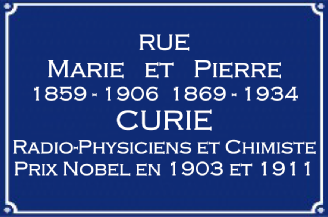
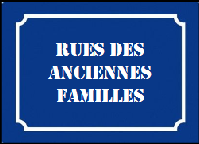

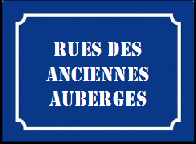
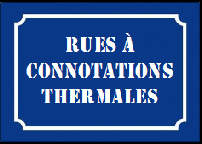
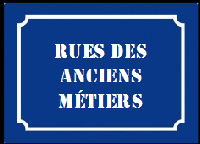
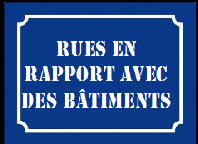



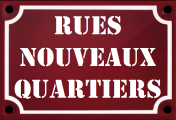





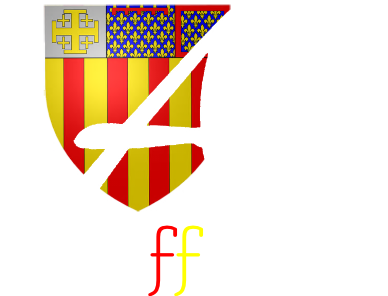

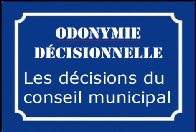







Pierre CURIE est né à Paris le 15 mai 1859 et Marie CURIE, née SKLODOWSKA, à Varsovie le 16 novembre 1867.
Ils forment un couple de chercheurs scientifiques mondialement connus. Ils se rencontrent à Paris grâce à leur passion commune pour les sciences. Marie est la jeune assistante de Pierre et ils se marient le 26 juillet 1895. Ils auront deux enfants, dont Irène qui, avec son mari Frédéric JOLLIOT, recevra le prix Nobel de chimie en 1935 pour la découverte de la radioactivité artificielle.
Pierre et Marie CURIE identifient en 1898 le polonium, un atome radioactif nommé de la sorte vu que le nom évoque « Pologne », pays de naissance de Marie. Ils obtiennent le prix Nobel de physique en 1903 pour leurs travaux sur les radiations.
Après la mort de Pierre, renversé par un carrosse à Paris, le 19 avril 1906 à 46 ans, Marie CURIE poursuit seule ses recherches et elle se voit offrir la chaire du département de physique, poste qui était destiné à Pierre avant sa mort : elle devient ainsi la première femme professeur à l’Université de Paris.
Le fait d’isoler le radium en 1910 lui vaut un second prix Nobel en 1911, en chimie cette fois. Marie CURIE sera aussi une icône dans la lutte pour l’égalité des droits des femmes. En tant que femme et en tant qu’étrangère, elle a dû franchir de nombreux préjugés et barrières dans les mondes académique et scientifique, aussi bien en France qu’à l’étranger.
Le 4 juillet 1934, onze ans avant que les femmes n’obtiennent le droit de vote, Marie CURIE meurt des suites d’une anémie réfractaire contractée suite à une trop longue exposition aux radiations.
Le 20 avril 1995, les cendres de Pierre et Marie CURIE sont transférées au Panthéon à Paris.
Le saviez-
Marie CURIE fut la première femme à recevoir un prix Nobel, la première scientifique à en avoir reçu deux et la seule à avoir reçu un prix Nobel dans différentes disciplines scientifiques.
Réflexion d'odonymie : Pierre et Marie ou Marie et Pierre ?
Le 11 juillet 1938, la Rue du SÉMINAIRE est remplacée par la Rue Marie et Pierre CURIE.
Le 13 décembre 1940, le gouvernement de Vichy supprime cette décision et rétablit la Rue du SÉMINAIRE.
Le 14 novembre 1944, après la libération, le conseil municipal valide les décisions de 1938 à une « nuance » près en ce qui concerne la Rue du SÉMINAIRE où Pierre passe devant Marie. C'est ainsi que les 2 plaques avec un ordre différent dans les prénoms cohabitent encore aujourd'hui.
Pierre CURIE was born in Paris on May 15, 1859 and Marie CURIE, born SKLODOWSKA, in Warsaw on November 16, 1867.
They form a couple of world-
Pierre and Marie CURIE identify in 1898 the polonium, a radioactive atom named in this way since the name evokes "Poland", country of birth of Marie. They won the Nobel Prize in Physics in 1903 for their work on radiation.
After the death of Pierre, run over by a coach in Paris, on April 19, 1906 at the age of 46, Marie CURIE continued her research alone and was offered the chair of the physics department, a position which was intended for Pierre before his death: she thus becomes the first woman professor at the University of Paris.
The isolation of radium in 1910 earned him a second Nobel Prize in 1911, this time in chemistry. Marie CURIE will also be an icon in the fight for equal rights for women. As a woman and as a foreigner, she has had to overcome many prejudices and barriers in the academic and scientific worlds, both in France and abroad.
On July 4, 1934, eleven years before women were granted the right to vote, Marie CURIE died of refractory anemia contracted from too long exposure to radiation.
On April 20, 1995, the ashes of Pierre and Marie CURIE were transferred to the Panthéon in Paris.
Did you know ?
Marie CURIE was the first woman to receive a Nobel Prize, the first scientist to have received two and the only one to have received a Nobel Prize in various scientific disciplines.
Reflection of odonymie : Pierre and Marie or Marie and Pierre ?
On July 11, 1938, Rue du SÉMINAIRE was replaced by Rue Marie and Pierre CURIE.
On December 13, 1940, the Vichy government abolished this decision and re-
On November 14, 1944, after the liberation, the municipal council validates the decisions of 1938 with a “nuance” near concerning the Rue du SÉMINAIRE where Pierre passes in front of Marie. This is how the 2 plaques with a different order in the first names still coexist today.
